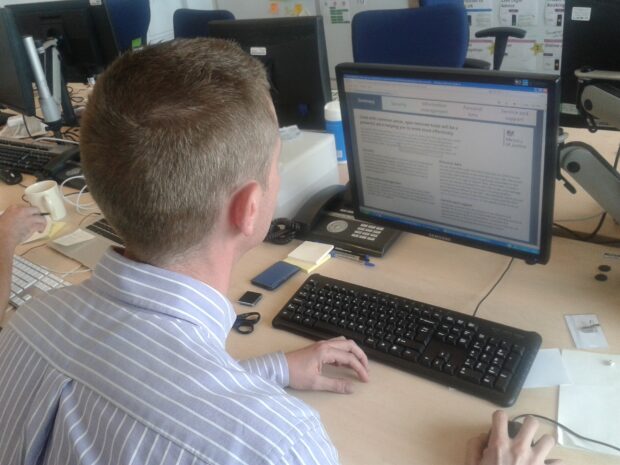MOJ digital has published a guide to help staff in the department use web tools as part of their day-to-day work. The open internet tools guidance brings together policies and information in one place to give staff the confidence to use the latest technology.
We’re already working closely with the Government Digital Service to rise to the challenge that civil servants’ technology at work should be at least as good as the technology they use at home, which will help achieve efficiency and cost savings. This includes opening up access to online tools that allow staff to do tasks like planning and tracking projects or gathering opinions from groups of people.
GDS has published a list of open internet tools, some of which MOJ staff could already access. We wanted to pull all the relevant policies and information together in one place to give people the knowledge and confidence on how to use online resources for their work.
Through our user needs research with MOJ staff, we know there is demand to use online tools, but also a need to be clear about what kinds of information people could safely use them for. Our users felt that guidance would help them be more confident about what information they could share via an internet tool: for example, sensitive personal data would be ruled out and kept within the department’s secure systems.
What we did to give staff greater access to open internet tools
We knew that we needed to collaborate with colleagues across the department specialising in areas like information assurance, information management, data protection compliance and IT service management.
The people working in these areas were keen to help enable our staff to use these tools in a way that increased their productivity while also protecting our information in a sensible and proportionate way.
The aim for the guidance was to make it simple and usable, so staff would be aware of their responsibilities and feel empowered to use open internet tools. In the back of my team’s mind was the goal to produce something similar in feel to the GDS design principles.
It was our hope that keeping the document short and simple would encourage people to read it in its entirety, but we recognised that we needed to include important information about how they should use these tools safely.
How we achieved something close to what we wanted
We worked collaboratively with colleagues to develop the guidance and turn the legally-focused wording from sources like the Data Protection Act into something succinct and user-friendly.
When we tested the language with colleagues in different teams to see what they did and didn’t understand, the most frequent comment we had was “it’s too long, I’d never read all this!” As a result of this feedback, we continued to collaborate with colleagues across the department to shorten as much as possible.
The end result
We hadn’t fully appreciated the complexity of some of the information we needed to get across, and in some cases it wasn’t possible to condense the information into one sentence principles as we had hoped.
Nevertheless, almost 80% of users said they found this guidance helpful and we are confident that our staff now feel more empowered to try these tools. However, we know there are still improvements that can be made and so we’re going to continue to iterate and find how user needs around open internet tools could be better met.
Please have a look at the guidance and give us your feedback in the comments below - we welcome discussion on what you think of it and where we could make improvements.


1 comment
Comment by Graham Hodgson posted on
Great to see this guidance. There are some fantastic, secure and empowering free tools that can be used in the Public and Education sectors.
We need to make sure these are adopted to deliver value to all stakeholders and reduce overall costs. We must educate colleagues in their use. Sadly not everyone will understand the advice, nor the opportunity available to deliver better services.